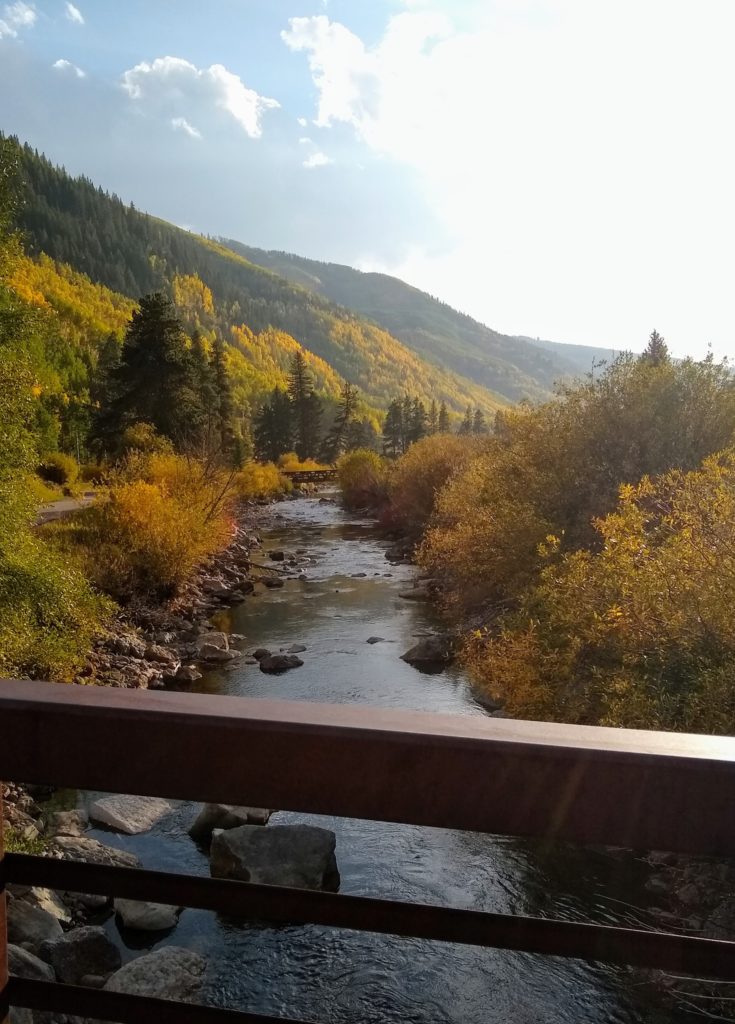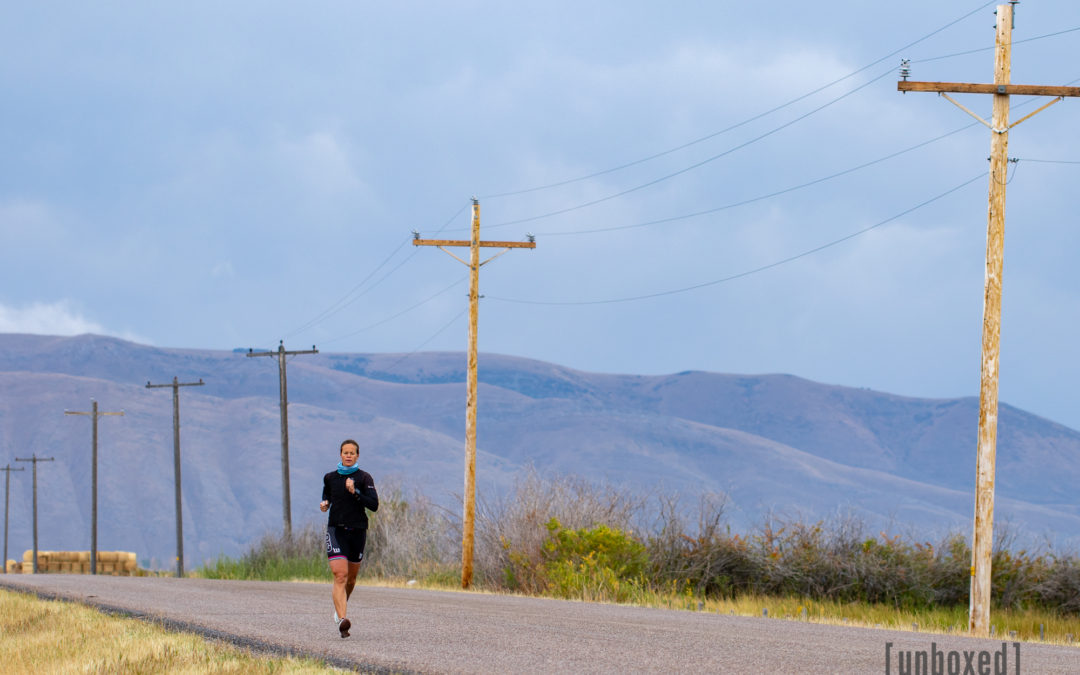As a tribute to that grey area between optimism and denial, I continued to maintain a regular triathlon training schedule throughout 2020, even after the flood of race cancellations in March, and the disappointing dribble of event cancellations and postponements that continued all spring and summer.
Deep down I hoped that one of these days, there would be news of a Covid-ready race, and only the blindly faithful, those still clinging to discipline in the fog of the unknown, would be ready to respond at a moment’s notice.
That day came in early September.
The recently formed Professional Triathletes Organization (PTO) threw their support behind a small, locally produced triathlon at the border of Utah and Idaho, and invited the U.S. based pros to join the fun. We had two weeks to prepare for the Bear Lake Brawl 70.3.
Physically I was ready to tackle this challenge, but mentally? I wasn’t so sure. Months of pervasive uncertainty had softened the hard edges of my typical training regime, and I had become much less willing to fight through discomfort in the absence of any significant purpose. I was also dismayed to learn that my equipment was no longer race-ready, when the bike shop informed me I needed new brakes, new wheels, a new drive-train, new cables and housing… Apparently 5,000 miles had slipped by in the blink of a pandemic, and – with the curious exception of my aero-pads – nearly everything on the bike had aged significantly without my notice.
By my fifth trip back to the bike shop, and just days before the race, it became clear that despite a healthy accumulation of bike parts, nothing I owned was compatible with anything else, and I was suddenly staring down the prospect of finally having a race to do, but no bike to do it on.
While this was anxiety-provoking enough, there were other factors complicating race week too. The plan was to avoid other humans and human-shared spaces as much as possible by driving the eight hours out to Idaho, and then camping overnight.
I bet you think that sounds like fun.
Well, I am many things, but road-trip enthusiast and expert camper, I am not. The logistics and unknowns were consuming me. On the final day before departure, too panic-stricken and disheveled to properly finish my swim workout, I sat on the edge of the pool and asked myself:
“…Is this fun for you?”
The hint of sarcasm in this moment of introspection was enough to remind me that I was getting too tangled up in the details, and there wasn’t much point in pursuing this race if I was just going to be miserable the entire way.
Ultimately, a QT2 teammate came through at the last minute to save the day, lending me a set of (much faster) race wheels that solved the most pressing of my bike dilemmas. And thankfully, I had two travel companions who know what they’re doing when it comes to road trips and camping.
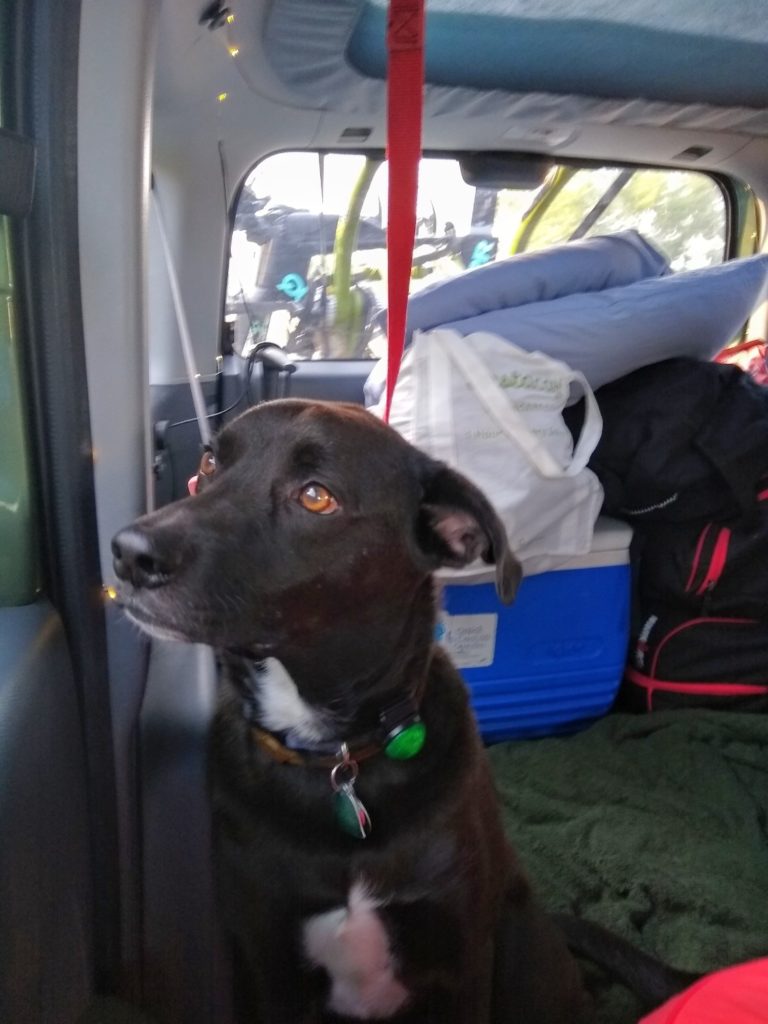
The drive across the hazy, colorless landscape of Wyoming was smooth and uneventful, and we arrived the afternoon before the race with plenty of time to get to my assigned packet pickup appointment at 4:54pm. All racers had to register for a one minute long appointment time to prevent any gathering or overcrowding. I’ve never been that good at waiting in line, so I appreciated this new Covid requirement.
Our campsite was pretty basic, but at least Idaho hasn’t been severely impacted by the recent wildfires, and we were still allowed to cook over a campfire. I had my usual salmon and rice pre-race dinner (Oh, how I’ve missed that race tradition!), but now with a nice crispy char.
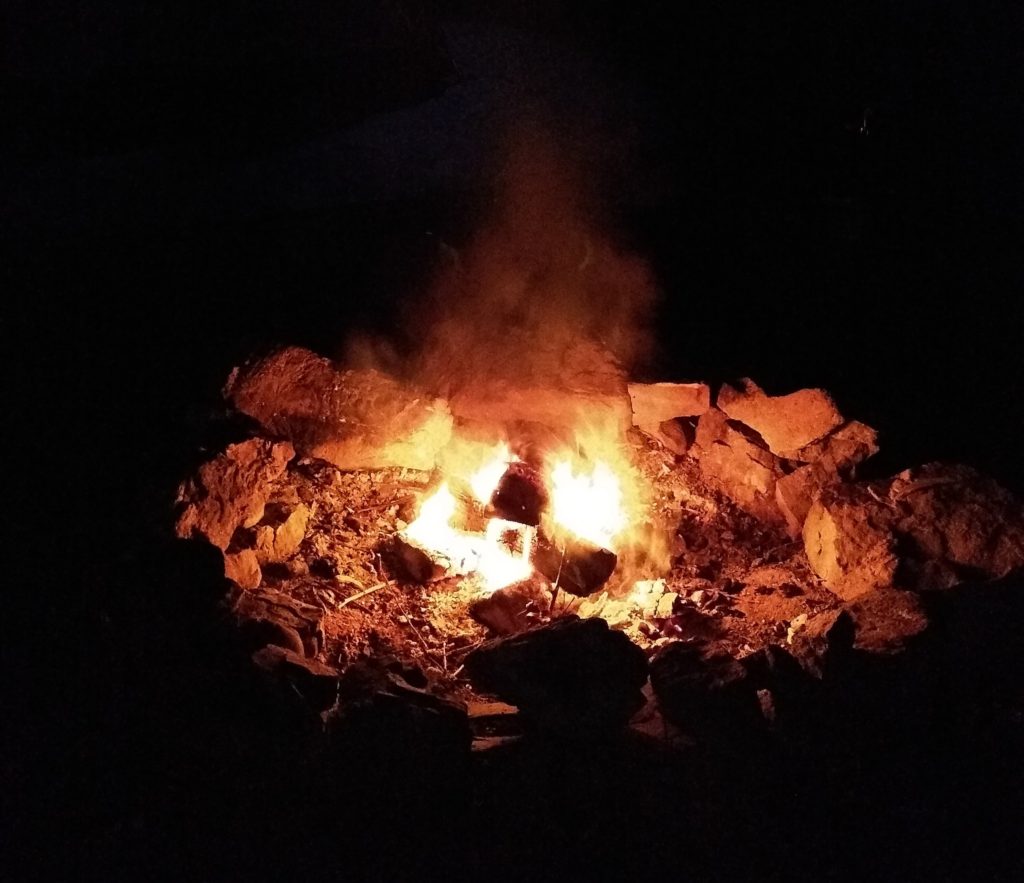

One challenge with camping (other than the absence of a soft, fluffy bed) is that there’s nowhere to spread all my clothes and gear out so I can hit T-Zero with precision first thing in the morning. But I have since learned that I can put morning clothes on just fine without displaying them along the floor in the precise order they need to be applied. Good to know.
Spectators were not allowed at this race, so I left B and Kona sleeping peacefully in the tent and figured I’d get to the race start on my own two (borrowed) wheels. It was a good plan, but I didn’t anticipate how incredibly dark it still is at 6 am on the second-to-last day of summer. So I tethered a few camping lanterns to myself and hoped no one would run me over while I cycled the road leading in to the race site.

It was still fairly dark even at 7:30am, race start time, with heavy grey clouds promising an incoming storm. A few light sprinkles started and the wind kicked up, altering our swim course as one of the turn buoys came un-moored and took flight.
In time trial format, we started ten seconds apart, and I was #2 in line, one of the first to run down the sandy beach and into water that was only knee deep for an eternity (or roughly 100 meters).
With the third corner removed, the new swim course kept us parallel to the shoreline for three laps, where the water never exceeded three feet deep. The wind had created a violent chop and the westbound current was so strong, it was literally faster to run than swim. This was a detail I learned when several water-runners trotted by me while I thrashed about in the waves. Other benefits of running over swimming included avoidance of the freeze-your-face-off cold water (it was 62 degrees, which isn’t the worst ever, but we didn’t get a chance to acclimatize before diving in), the delightful opportunity to inhale air instead of waves, and better visibility to manage the chaos of some 200 swimmers that seemed to be going in all directions at once. So I swim-ran my way to an all time personal record for slowest 70.3 swim split, at 37 minutes.
I followed up that swim PR with an all time personal record for slowest T1, as I pulled on gloves stuffed with hand warmer packets, shimmied arm warmers up my arms, fumbled the zipper of a down vest, and slid into a neck gaiter (which has been an everyday staple for the last six months, so I’ve grown rather attached).
I was taking a gamble with all that extra warm gear – hoping that it would turn out to be for survival and not just comfort. I knew some of my competition would take their gamble the other direction – hoping they’d be able to tough it out in nothing more than wet spandex.
For the first 15 miles, it seemed like maybe I had played it too conservative. The day was still ominously dark, but a tailwind had me clocking 30 mph splits, and I felt decent – almost warm-ish. But just as I rounded the corner at the southern end of the lake, the wind kicked up with an icy, sideways, stinging rain. The siege lasted for another 30 miles or so, and the combination of cold and wet soon removed all control of feet and hands. My hands were so frozen that I couldn’t even shift gears, or hold a water bottle, which meant I couldn’t take in any nutrition for the final hour of the bike (not my favorite way to prepare for a half marathon). I also determined that the excruciating pain in my hips seemed to be the consequence of attempting to race two hours tucked in aero position after practicing it just about never for the entire summer. I spent a little time contemplating how awful all of this was, and then concluded that I fully expect racing to be uncomfortable, and since there’s no such thing as degrees of discomfort, then yes, this is fun for me.
As I finished the final out and back on the bike, I saw a few age group athletes cycling in their wetsuits, which is hilarious, but also brilliant (And not just because their T1 times were probably three times faster than mine).
I was thrilled to be done with the bike but quickly discovered that the hip muscles that had gone on strike over my unreasonable demand for 100% aero were also the muscles needed for running, walking and standing – and I couldn’t do any of those things. Leaning on my bike to use it as an impromptu walker, I shuffled my way through transition and lowered down to sit on the ground for what became a new personal record for all time slowest T2.
Quitting wasn’t on my list of things to do, but I was possibly on my way to a new personal record for slowest half marathon. I expected that I might have no choice but to walk the whole thing, so I left all my warm gear on, since I wouldn’t have access to the intensities that generate body heat.
I got off to a wobbly start, but gradually recovered leg function to the point of jogging, and then running, slowly at first, and then less slowly. I did my best to combat the nutrition deficit the bike had caused, clumsily pawing at gels and beverages from each aid station. The volunteers wore masks so it was nearly impossible to hear them say what was in the cups I reached for. I got a few surprises.
By mile 6, the feeling had restored to my hands and feet, and the pain in my legs subsided as I settled into a reasonable run pace along the flat out and back course. I never reached a point of feeling too warm, even though this was the most winter attire I’ve ever worn for a triathlon. I saw one guy doing the run in a wetsuit, and another still wearing his swim cap as he sprinted towards the finish. I’ll keep those tricks in mind for the next cold race.
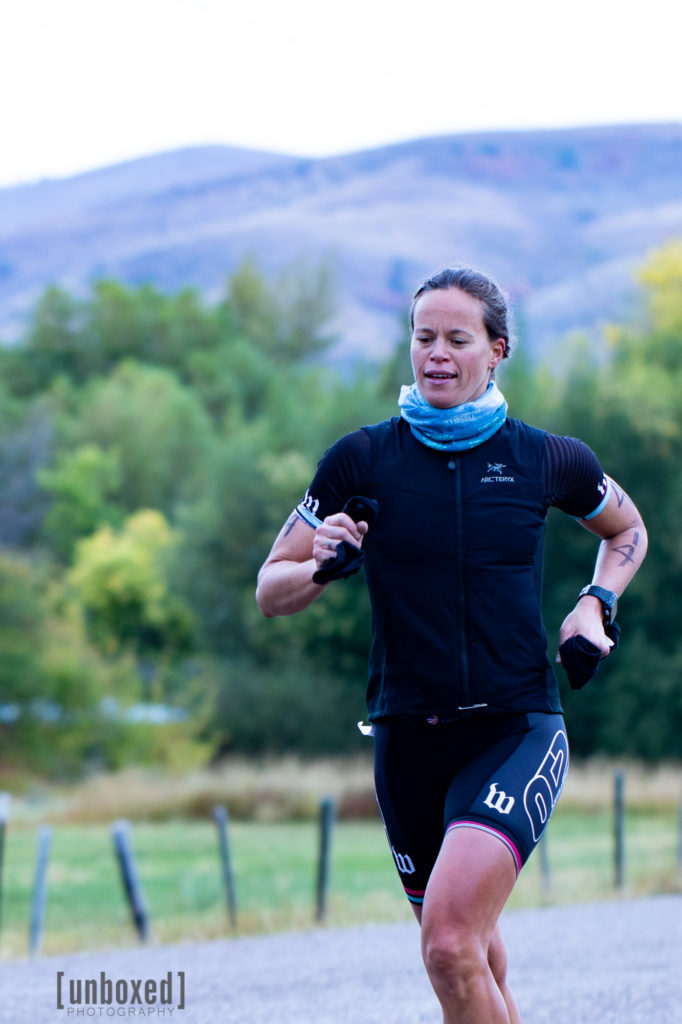
I finished 8th in a field that started with 14, which meant my persistence earned me a paycheck.
I’ll be honest, even when I factor in the free granola bar at the finish line, and the $2 warm shower I got at the campground afterwards, it wasn’t the most fun I’ve ever had on a Saturday… But hey, I’d still do it again.
